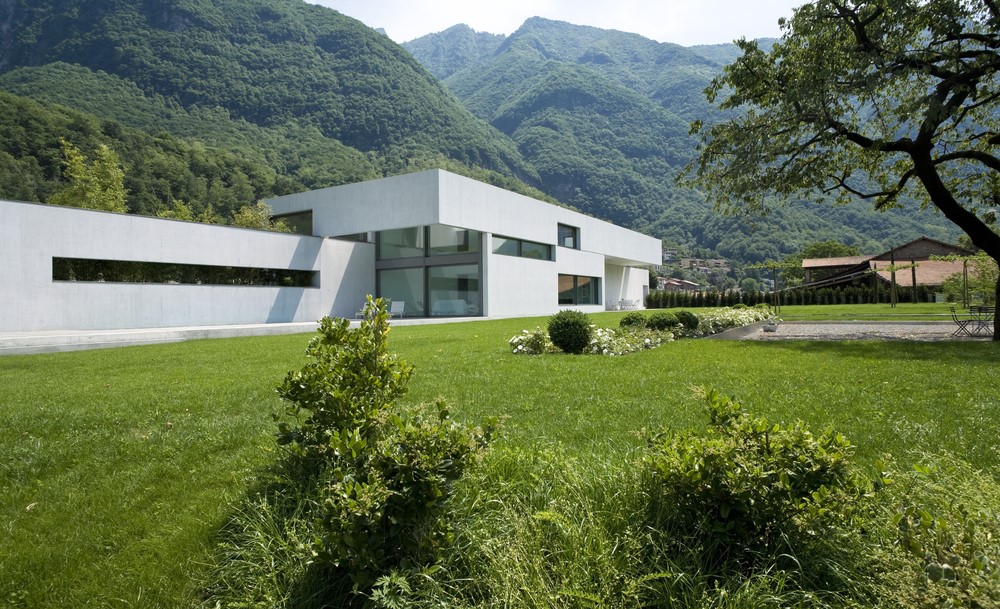Until recently, going off the grid was a choice made by farmers, recluses, and preppers who purposely lived far from phone and power lines. Compromises were key. Now, it’s a choice that many can make without leaving the comforts and luxuries behind, and can be affordable, too.
Being off the grid simply means a house has its own supply of power, water, and sanitation services. Add in today’s standard utilities like phone, cable, and internet and see that every house is a nexus in several networks that can reach back to power plants, reservoirs, and other centralized services. Thanks to smartphones, the IT part can be taken care of by simply being in sight of a cell phone tower. Prior to that, farms and ranches relied on wells and septic systems, some of which didn’t even require electricity. Power was trickier. Portable generators and more efficient appliances clear that hurdle, as long as fuel is available. Solar and wind power coupled with battery systems mean that fuel can last a lot longer.
Let’s see where that lets people live.
Mountain Retreats
A log cabin in the mountains is an architectural archetype. Self-reliance at its extreme. A house built from and heated with the forest around it. That’s from when forests were bigger, much bigger.
Now, a modern mountain home isn’t constrained by the shapes of some logs. Materials like concrete, glass, and steel can fit in nicely, and have lighter environmental impact. The windows can be bigger, too. Another advantage of those materials is fire resistance. Mountain retreats may have to deal with wildfire threats. Concrete, glass, and steel have their advantages.
At least there’s probably plenty of water. Make sure there isn’t a mountain or tree between the house and the cell tower. The sun doesn’t always shine, but mini-hydro systems are available. Wind works, too, in the right setting.
Desert Oasis
Prefer sunshine and no moss? Move to the desert. Naturally, water is an issue, but catchment systems and greywater management can catch and reuse the little water that comes by. Use the land itself as a heat sink by setting at least one side of the house into a slope. Solar rules and desert winds blow.
Self-sufficiency in arid conditions has been successful enough to spawn the Earthship movement, houses that are so self-supportive that they also grow their own food. That’s a lot fewer trips to the market, which can be handy for sufficiently remote sites.
 Source: Green Homes for Sale
Source: Green Homes for Sale
Private Islands
Islands have frequently been self-sufficient unless they’re close enough to the mainland’s power grid. Even then, they usually had to provide the rest of the services on-site. Ironically, being surrounded by water makes water an issue – if it’s saltwater. Hope for rain, and catch. Hope for a well that reaches something that isn’t too brackish. Don’t despair if none of those are sufficient. New desalination technologies can produce potable water, just expend some energy (and eventually clean those filters.)
As for energy, again, solar and wind make the difference. As for seeing a cell phone tower, line of sight to the mainland may be all that’s necessary for uninterrupted phone calls and streaming movies.
 Source: Zillow
Source: Zillow
Ski Chalets
Except for the most remote ski locations, most ski chalets can tie into their local resort’s grid. Even with that ability, ski chalets are increasingly improving their ability to go off grid. Storms happen and winter conditions aren’t something to just wait out. It makes sense to have more than a few extra logs to put on the fire. One of the great enablers is excellent insulation. It may sound dull, but it is simple, effective, and means a lot less wood splitting and ash shoveling.
Urban Independent
The map of where it makes economic sense to go off grid has extended into the cities. As solar power prices fall, their total life cycle costs become more competitive with the grid. Install enough panels on the house and be able to sell the excess back to the grid, or be self-sufficient when wind or ice storms knock down power lines. People living in quake regions may find a sense of security and relief knowing their house will be able to operate without having to worry about fuel deliveries. Don’t expect to easily put up wind turbines, though.
The number of homeowners who want to go off-the-grid probably exceeds the number of farmers, recluses, and preppers who helped establish the old view of living off the grid. With the right architect, modern home styles fit into natural environments in ways reminiscent of Frank Lloyd Wright. A new era of home ownership is happening and is enjoying broader, more diverse settings.


